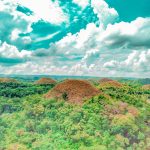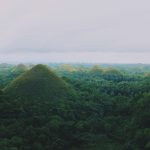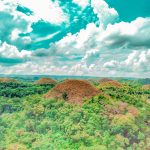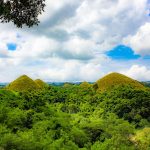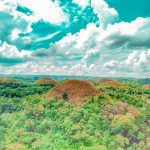Download links
How to install Rediscovering Paradise: Boracay's Rebirth APK?
1. Tap the downloaded Rediscovering Paradise: Boracay's Rebirth APK file.
2. Touch install.
3. Follow the steps on the screen.
Description
In April 2018, the Philippine government made a bold decision to temporarily close Boracay Island, a world-renowned tourist destination, for a six-month rehabilitation period. This closure was prompted by alarming reports of environmental degradation, including pollution, overcrowding, and the destruction of natural habitats. The island, often dubbed as “paradise” for its powdery white sand beaches and vibrant nightlife, had become a victim of its own popularity.
The influx of tourists had led to unsustainable practices, with many establishments failing to comply with environmental regulations. The government recognized that immediate action was necessary to restore Boracay’s ecological balance and preserve its beauty for future generations. During this six-month hiatus, extensive efforts were undertaken to rehabilitate the island.
Infrastructure improvements were made, including the installation of a proper sewage system to address the rampant pollution that had plagued the waters surrounding Boracay. The government also enforced strict regulations on businesses operating on the island, ensuring that they adhered to environmental standards. This period of closure was not merely a pause in tourism; it was a transformative phase aimed at reviving Boracay’s natural allure and ensuring that it could sustain both its ecosystem and its economy in the long run.
Key Takeaways
- Boracay underwent closure and rehabilitation to address environmental issues and has since reopened with a focus on sustainable tourism.
- Sustainable tourism efforts on the island include strict regulations on beach activities, waste management, and the preservation of natural resources.
- The closure had a significant impact on the local community, with many residents losing their livelihoods, but efforts are being made to provide alternative sources of income.
- New regulations and policies for visitors include a limit on the number of tourists allowed on the island at any given time and a ban on single-use plastics.
- The rehabilitation efforts have led to the return of Boracay’s natural beauty, with cleaner beaches, clearer waters, and a rejuvenated ecosystem.
- Future plans for the island’s development include continued focus on sustainable tourism, infrastructure improvements, and community involvement in decision-making processes.
Sustainable tourism efforts on the island
Implementing Carrying Capacity Limits
One of the most notable efforts was the implementation of a carrying capacity limit for visitors. This regulation aimed to control the number of tourists allowed on the island at any given time, thereby reducing overcrowding and minimizing environmental impact. By capping daily visitors, authorities sought to create a more enjoyable experience for tourists while safeguarding Boracay’s natural resources.
Promoting Sustainable Practices Among Local Businesses
Establishments were urged to adopt eco-friendly measures, such as waste segregation and the use of biodegradable materials. The local government also launched educational campaigns to raise awareness about environmental conservation among both residents and tourists. These initiatives emphasized the importance of preserving Boracay’s natural resources, including its coral reefs and marine life.
Redefining the Tourism Model
By fostering a culture of sustainability, Boracay aimed to redefine its tourism model, ensuring that economic growth did not come at the expense of environmental health. The island’s rehabilitation efforts served as a model for responsible tourism, demonstrating that economic development and environmental conservation can coexist in harmony.
The impact of the rehabilitation on the local community
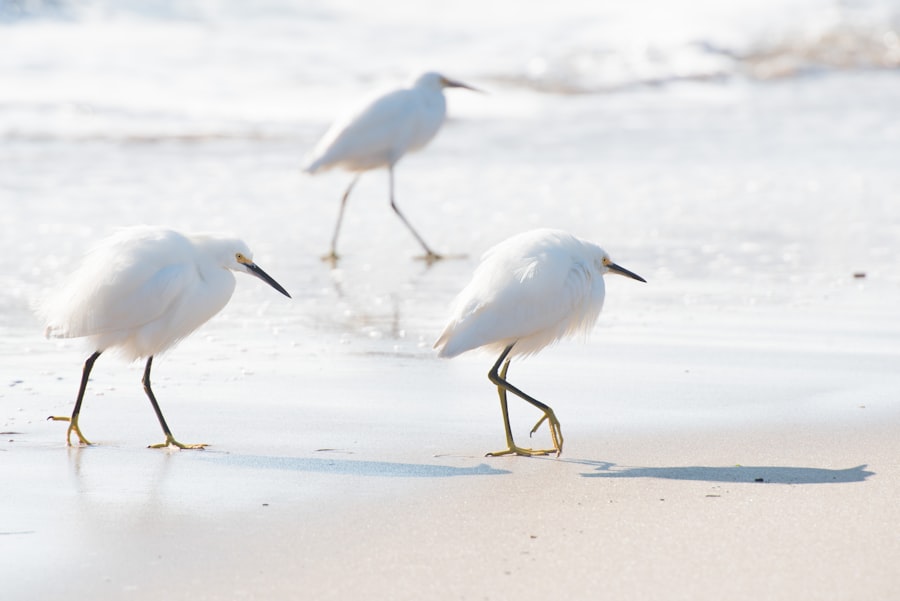
The rehabilitation of Boracay had profound implications for the local community, which had long relied on tourism as its primary source of income. While the temporary closure posed challenges for many residents and business owners, it ultimately paved the way for a more sustainable economic model. With the introduction of new regulations and a focus on responsible tourism, local entrepreneurs began to adapt their businesses to align with the island’s renewed commitment to environmental preservation.
This shift not only helped protect Boracay’s natural beauty but also fostered a sense of pride among residents who were now active participants in safeguarding their home. Moreover, the rehabilitation efforts provided opportunities for community engagement and empowerment. Local organizations and cooperatives emerged, focusing on sustainable practices such as organic farming and eco-tourism ventures.
These initiatives not only diversified income sources but also strengthened community ties as residents collaborated on projects aimed at enhancing their environment. The emphasis on sustainability encouraged locals to take ownership of their resources, leading to a more resilient community that could withstand future challenges.
New regulations and policies for visitors
| Country | Regulation | Effective Date |
|---|---|---|
| United States | COVID-19 testing requirement | January 26, 2021 |
| United Kingdom | Quarantine requirement | February 15, 2021 |
| Australia | Travel ban | March 20, 2020 |
As part of Boracay’s rehabilitation, new regulations were established to ensure that visitors contribute positively to the island’s ecosystem. One significant policy was the requirement for all tourists to secure an Environmental Fee upon entry. This fee was designed to fund ongoing conservation efforts and infrastructure improvements, reinforcing the idea that tourism should support rather than exploit natural resources.
Additionally, strict guidelines were put in place regarding waste management and littering, with fines imposed on those who failed to comply. Another critical regulation involved the prohibition of certain activities that could harm the environment. For instance, water sports that posed risks to marine life were closely monitored, and some were restricted altogether during peak seasons.
The local government also worked closely with tour operators to promote eco-friendly excursions that highlighted Boracay’s natural wonders without causing harm. These policies aimed not only to protect the island’s fragile ecosystems but also to educate visitors about their role in preserving this tropical paradise.
The return of Boracay’s natural beauty
The rehabilitation efforts have yielded remarkable results in restoring Boracay’s natural beauty. Once plagued by pollution and overcrowding, the island has seen significant improvements in water quality and biodiversity since its reopening.
This transformation has revitalized marine life, allowing coral reefs to recover and flourish once again. The restoration of Boracay’s beaches has also been a focal point of rehabilitation efforts. Authorities undertook extensive beach clean-up campaigns, removing debris and restoring the pristine condition of its shorelines.
The iconic White Beach, known for its powdery sand and stunning sunsets, has regained its status as one of the world’s most beautiful beaches. Visitors can now enjoy a more serene experience as they stroll along its shores, free from the litter and congestion that once marred its charm. This revival not only enhances the aesthetic appeal of Boracay but also reinforces its reputation as a premier destination for eco-conscious travelers.
Future plans for the island’s development

Preserving Natural Beauty
Future initiatives include expanding green spaces and promoting biodiversity through reforestation projects aimed at restoring native flora and fauna. These efforts will not only enhance the island’s natural beauty but also contribute to carbon sequestration and climate resilience.
Sustainable Infrastructure Development
Additionally, there are plans to further develop eco-friendly infrastructure that supports sustainable tourism practices. This includes investing in renewable energy sources such as solar power and promoting electric transportation options for both residents and visitors.
A Model for Responsible Tourism
By prioritizing sustainable development, Boracay aims to set an example for other tourist destinations grappling with similar challenges related to over-tourism and environmental degradation. In conclusion, Boracay’s journey from closure to rehabilitation serves as a powerful reminder of the importance of sustainable tourism practices. The island’s commitment to preserving its natural beauty while fostering economic growth reflects a broader trend in global tourism towards responsible travel. As Boracay continues to evolve, it stands poised to inspire other destinations facing similar challenges, demonstrating that it is possible to harmonize tourism with environmental stewardship for generations to come.
If you’re planning a trip to Boracay, you may want to check out this article on WhatsApp Messenger to stay connected with friends and family while you’re away. With its easy-to-use interface and free messaging and calling features, WhatsApp is a convenient way to keep in touch with loved ones even when you’re relaxing on the beautiful beaches of Boracay.
FAQs
What is Boracay?
Boracay is a small island in the Philippines known for its beautiful white sand beaches and clear blue waters. It is a popular tourist destination for its stunning natural beauty and vibrant nightlife.
What are the popular activities in Boracay?
Some popular activities in Boracay include swimming, snorkeling, scuba diving, kite surfing, and island hopping. The island also offers a variety of restaurants, bars, and shops for visitors to enjoy.
When is the best time to visit Boracay?
The best time to visit Boracay is during the dry season, which runs from November to April. This is when the weather is most pleasant and the waters are calm, making it ideal for beach activities.
How do I get to Boracay?
Visitors can fly into either Kalibo International Airport or Caticlan Airport, and then take a boat to Boracay. There are also direct flights to Caticlan from Manila and other major cities in the Philippines.
Is Boracay a family-friendly destination?
Yes, Boracay is a family-friendly destination with plenty of activities and accommodations suitable for families. The island offers a range of options for visitors of all ages, including kid-friendly resorts and attractions.
Are there any environmental regulations in place in Boracay?
Yes, in 2018, the Philippine government closed Boracay for six months to undertake major environmental rehabilitation efforts. Since then, the island has implemented strict regulations to protect its natural resources, including limits on the number of visitors and activities allowed on the island.

